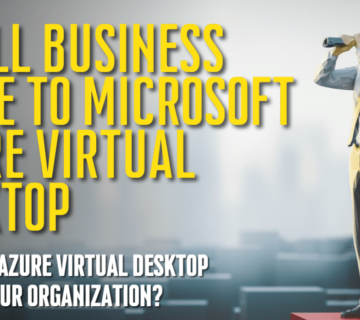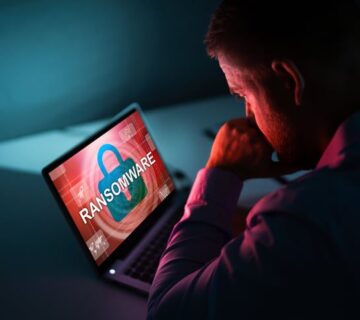What Would Make A Person Vulnerable To A Ransomware Attack?
Modern businesses rely on technology to streamline operations, enhance efficiency and ultimately boost revenue. It is an effective way to keep up with today’s digital world, ensure seamless data integration and management, and simplify communication in the organization. However, most businesses are unaware of the dangers the digital world brings and how it can affect their operations. This means some companies readily engage in practices that expose them to cybercriminals.
Ransomware attacks are business-oriented attacks targeting both large and small businesses, and it is a growing trend in the U.S. For instance, 2019 experienced an increase of about 195% in ransomware attacks targeting various organizations. But what exactly is a ransomware attack, and what makes a business vulnerable to attacks? Read on to find out.
What Is Ransomware?
Ransomware is a form of malicious software or malware used by cybercriminals to encrypt a victim’s files or affect computer functions. Hackers will continue to encrypt or block access to these files and threaten to expose or publish the information unless the user pays a ransom. Most cybercriminals provide payment deadlines, failure of which the data becomes unrecovered or inaccessible forever.
Generally, attackers target any organization regardless of industry and demand ransom in order to restore the data. The FBI and other government agencies recommend against making payments if a business or individual falls victim to a ransomware attack. Here are particularly the most common types of ransomware:
- Locker ransomware: This ransomware malware obstructs standard computer functions, making the system inoperable. However, it does not target individual files but prevents users from operating their systems.
- Crypto ransomware: Unlike locker ransomware, this malware encrypts crucial files but does not affect system functions. And with most users unaware of data backups, crypto-ransomware has a devastating impact on victims.
What Are Some Risk Factors for Ransomware Attacks?
Protecting your business’s IT infrastructure against ransomware attacks is crucial. However, certain practices in your organization can easily make you vulnerable to attacks and risk losing sensitive company data. The following are some ways that can expose your business to a ransomware attack.
Reusing Passwords
Having strong and unique passwords for different accounts is imperative and an effective way to ensure unauthorized personnel cannot access crucial information within the organization’s IT system. However, it becomes a risky move if you use the same password in multiple accounts. Although it eliminates the need to remember several passwords for individual accounts, it exposes you to cybercriminals. Here is how reusing a password can harm your business:
- Risk other accounts: Once hackers obtain the password; they may access other accounts with a similar email address. If the password is insecure or lacks multi-factor authentication (2FA), they can easily breach your systems and steal crucial files or install malware.
- Loss of sensitive and financial data: Reusing passwords risks losing your financial and critical data in your organization. This is because it makes it easy for hackers to log into multiple company accounts using the same password and email address and access your data.
- Vulnerable to password guessing: Once a hacker accesses a single password for multiple accounts, they tend to understand your password protection pattern and indulge in guessing to determine the correct password for other accounts such as social media. It is also a way that promotes brute-force attacks, helping hackers to improve their hacking methods.
- Increased attacks: If hackers succeed in logging into one or more accounts in your organization using the same password, they can quickly breach your network, causing immense data loss and integrity issues. This makes your organization vulnerable to attacks.
Opening Suspicious Links
Emails are standard communication means in businesses, providing a platform to transfer files between employees, customers, and partners efficiently. However, opening emails from suspicious or unknown senders is often dangerous, as it exposes companies to hackers. It becomes worse when you open link attachments in the email, especially when they appear authentic. This is referred to as phishing, and it is a common method used by cybercriminals to hack systems.
Opening malicious links and providing your details can easily give hackers access to sensitive information. In most cases, links include malware that quickly installs into the system once you open the link. This gives hackers access to your system or IP address, enabling them to obtain your personal information or affect your systems’ functionality, resulting in a ransomware attack.
Skipping System Updates
Updating IT systems regularly is one way to keep your business safe against ransomware and other cyberattacks. Generally, software providers understand the threat most of their products face and how hackers enhance their hacking capabilities to breach firewalls in place. Hence, frequent updates are necessary to make software better and impervious to advancing attacks.
An outdated system would quickly be breached with more advanced malware, unlike a regularly updated IT infrastructure. Updating your system gives you more security and prevents ransomware attacks and other associated cyberattacks.
Executing Word with Macro-based Enabled
In a nutshell, macros are software supported in Word to facilitate task automation based on the level of complexity. Using a macro recorder, a macro is easy to write macros without exposing your system to hackers. However, making errors in the coding sequence may cause Word to freeze, making you vulnerable to ransomware attacks.
In most cases, hackers may target your business and write macros, putting your computer system at risk. Others may use code that may either encrypt applications and data files on the computer or install viruses or other malware in the system. Investing in macros from trusted sources helps alleviate such attacks. Different ways to protect your system through Word are:
- Disabling macros with notification
- Disabling macros but leaving digitally signed macros
- Disabling macros without notification
How To Prevent a Ransomware Attack
- Scan computers with reliable antivirus software regularly
- Configure the firewall to avert ransomware attacks
- Train employees regarding ransomware attack prevention practices
- Keep your OS security patches updated
- Have a 2FA authentication for all your accounts
- Limit administrative privileges in the organization
- Filter emails to block spam emails from reaching your employees
Ransomware Recovery Experts In Southern California
A ransomware attack can be devastating for any business, especially those lacking adequate measures to prevent such attacks. But learning practices that expose you to attackers and how to mitigate them is crucial to having a ransomware attack-free venture. This helps you protect sensitive company data and ensure the prevention of associated ransomware attacks.
If you have a business in Southern California, schedule a no-obligation free consultation with Technijian to learn how you can protect your business from Ransomware attacks.




No comment